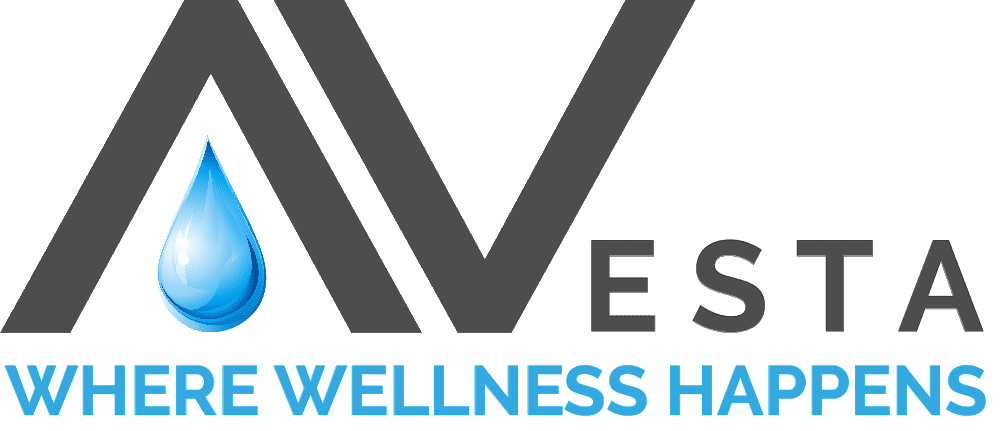In this Post
Working and the workplace look different these days. While hybrid and remote work options have granted some employees flexibility and freedom, it has also contributed to vague boundaries that would otherwise establish a healthy work-life balance for others. Furthermore, in a vast number of employees, it has also created a sense of isolation. These blurred lines and isolations have called the idea of workplace wellness into question.
To better understand how to establish and solidify workplace wellness, it is important to understand general wellness. Wellness is the ability to quantify mental, emotional, and physical well-being to pursue choices, activities, or lifestyles. When one thinks of wellness, one may think of participating in physical activity or practicing a hobby. In reality, however, wellness can also encompass the workplace.
Employees in good health deliver quality deliverables and exhibit a high level of performance in the workplace1. Healthy and well employees not only have a better quality of life but typically benefit from a lower risk of illness, injury, or disease; experience increased productivity; and have a greater likelihood of contributing to their environments2.
In the workplace, however, wellness can suffer from a multitude of factors: burnout, deadlines, workload, or just general stress. These seemingly everyday work stressors can become overwhelming and challenging to manage and may lead to problems in the workplace. For some employees, it can feel impossible to turn off the work switch when they clock out for the day. In 2021, stress, depression, and anxiety accounted for 50% of all work-related illness cases in the UK3.
Employers have an opportunity to combat these feelings by re-evaluating and restructuring working environments. As an employee or manager, there are ways to improve workplace wellness leading to increased mindfulness and overall well-being.
Start From Within:
Companies willing to develop supportive managers and executives have received healthier workplace reviews. Supportive managers can encourage empowerment among employees and overall wellness. In recent years, wellness incentives in the workplace have increased in popularity. At least 70% of companies offer wellness incentives to their employees to improve the mental well-being of employees4.
For example, Google offers employees onsite health and wellness services such as chiropractors, physical therapists, and physicians. Their employees also have access to various fitness centers. To further ensure that its employees maintain physical wellness, the company provides pre-portioned meals and snacks that meet nutritional requirements. To drive its wellness mission and generate work-life balance, Google grants employees flexible hours, vacation time, and volunteer incentives!
Whether or not your company has the resources to be as generous towards wellness as Google is, you can prioritize this in smaller-scale ways. Plan a company event after work such as a group fitness class or group IV vitamin infusions session to remind your work team to prioritize their physical wellness. If you are an executive in your company, you might be able to implement or encourage four-day workweeks. Studies conducted on four-day workweeks have seen an increase in productivity and efficiency across workplaces- making it a win-win for employees and employers5.
If changing a work schedule is not feasible, a simple check-in with coworkers and employees can go a long way. Approaching conversations with meaningful intentions can give insight into how people are feeling and can create a targeted approach toward how to address feelings of isolation, stress, and anxiety. When employees or coworkers feel comfortable voicing their concerns or giving honest feedback, the workplace is already on its way to improving its culture of wellness.

The Impact of Working From Home:
A work-life balance can seem difficult to attain when you work where you live. Just because your workplace might look a bit different from that of other employees, it does not mean that you can’t prioritize your well-being. In fact, it means that you should pay more attention to how your workplace affects your mental well-being.
One easy way to separate your work and home life is to set a physical boundary between the two in your workplace. For example, try to avoid working in your bedroom. The temptation of a cozy bed will not aid your productivity and contributes to the blurred lines between work and rest.
Additionally, your brain associates your bed with relaxing activities like reading or watching TV. Your bed should be a cue for continued relaxation and sleep. Working from bed alters your brain’s distinction of a bed and creates a sensation of wakefulness, which can lend itself to restless nights6.
Instead of sitting on the couch or getting into bed once you clock out for the day, try to get moving or get outside. Getting outside decreases your Vitamin D levels to strengthen your immune system over time. Beyond that, prolonged sitting creates pressure on your spine that creates back pain and, if not monitored, can lead to poor posture. One way to unplug at the end of a work day and to put your well-being first is to go outside and go for a walk.
Working from home has also been found to increase feelings of depression, anxiety, and isolation. As a result of the COVID-19 pandemic, many employees suddenly found themselves working from home. Many employees, however, continue to work remotely and have been found to have high levels of anxiety and depression. The prevalence and longevity of these feelings showcase the potential negative impact that working from home can have over time- making individual and workplace wellness all the more important.
Wellness in the workplace looks different depending on where you work. By prioritizing wellness, however, you can shift your habits and mindsets at work.
If you or another coworker is struggling with wellness habits, Avesta Ketamine and Wellness offers customizable IV infusions with vitamins and minerals designed to restore a balance within your body. With locations in Bethesda, MA, McLean, VA, and Washington DC, Avesta Ketamine and Wellness is committed to your well-being. If you want to request a phone consultation for IV infusions, please schedule a consultation.

Footnotes:
1 Leitão, J., Pereira, D., & Gonçalves, Â. (2021). Quality of Work Life and Contribution to Productivity: Assessing the Moderator Effects of Burnout Syndrome. International Journal of Environmental Research and Public Health, 18(5), 2425. https://doi.org/10.3390/ijerph18052425
2 Engaging employees in their health and wellness. (2021, May 5). https://www.cdc.gov/workplacehealthpromotion/initiatives/resource-center/case-studies/engage-employees-health-wellness.html
3 Work-related stress, anxiety or depression statistics in Great Britain. (2021). Health and Safety Executive. https://www.hse.gov.uk/statistics/causdis/stress.pdf
4 Nov 10, P. & 2021. (2021, November 10). 2021 employer health benefits survey – section 12: Health screening and health promotion and wellness programs. KFF. https://www.kff.org/report-section/ehbs-2021-section-12-health-screening-and-health-promotion-and-wellness-programs/
5 Haraldsson, G., & Kellam, J. (2021). GOING PUBLIC: ICELAND’S JOURNEY TO A SHORTER WORKING WEEK. Autonomy. https://autonomy.work/wp-content/uploads/2021/06/ICELAND_4DW.pdf
6 6 reasons working from bed isn’t a good idea. (2020, September 11). Healthline. https://www.healthline.com/health/working-from-bed-isnt-doing-you-favors
Other Sources:
7 companies with epic wellness programs. (n.d.). Monster Career Advice. Retrieved September 21, 2022, from https://www.monster.com/career-advice/article/companies-good-wellness-programs
Adams, T., & Nguyen, T. (2022). Mind the Workplace: Employer Responsibility to Employee Mental Health. Mental Health America. https://mhanational.org/sites/default/files/MTW_Report_2022.pdf
Headspace for work—What’s missing with work well-being. (n.d.). Retrieved September 21, 2022, from https://www.headspace.com/work/missing
Afonso, P., Fonseca, M., & Teodoro, T. (2021). Evaluation of anxiety, depression and sleep quality in full-time teleworkers. Journal of public health (Oxford, England), fdab164. Advance online publication. https://doi.org/10.1093/pubmed/fdab164
Photo by Andrea Piacquadio from Pexels: https://www.pexels.com/photo/woman-in-red-t-shirt-looking-at-her-laptop-3755761/
Author Dr. Ladan Eshkevari, PhD, CRNA, FAAN Dr. Eshkevari is the lead clinician at Avesta, and is a long time researcher and educator in physiology, biophysics, and anesthesiology. She is passionate about assisting patients with retractable, difficult to treat mood disorders, and relies on the latest research to bring evidence to Avesta’s practice to better understand and serve patients.


